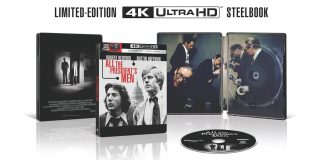 To test the HD (high-definition) video quality of Verizon’s FiOS HD service, I made a comparison between the fiber-optic service and over-the-air (OTA) transmissions of the Lakers vs. Jazz NBA playoff game yesterday. The broadcast was in 720p from ABC network in Dolby Digital.
To test the HD (high-definition) video quality of Verizon’s FiOS HD service, I made a comparison between the fiber-optic service and over-the-air (OTA) transmissions of the Lakers vs. Jazz NBA playoff game yesterday. The broadcast was in 720p from ABC network in Dolby Digital.
There appeared to be no difference in video quality through the Verizon fiber-optic service. Both signals were sharp with lots of contrast and no pixelation or compression artifacts to note. Unlike some high-definition broadcasts which loose some sharpness but worse tend to break apart in black zones due to over compression, the FiOS footage held up to the OTA footage. The folks at Verizon claim their HD feeds are pure HD, (pure meaning MPEG-2 format), so both signals were equal in that respect. MPEG-2 compression, or at least one type of compression, is needed to move that amount of data around.
Higher levels or second passes of compression are often used on HD content because of the format’s demand on bandwidth. Providers will often move channels around or drop channels in order for more high-definition channels to exist. For satellite providers to offer more high-definition channels, they usually need to launch additional satellites. Unfortunately, HD broadcasts are often overly compressed causing degradation in the image.
On the audio side, the Dolby Digital 5.1 channels from both the antenna signal and the Verizon fiber signal varied greatly in volume levels. The audio that is broadcast over-the-air is usually raw and uncompressed, but not amplified or “normalized” for television, so it is brought into your system at a much lower level. But turn up the volume and you will be in for a surprise. The audio will make you believe you are at the game, whether using the HDTV’s built-in speakers or a surround system. The audio from FiOS, while still a great quality, sounded condensed when compared to the over-the-air audio.
If you would like to report on HD quality in your area, contact us.












